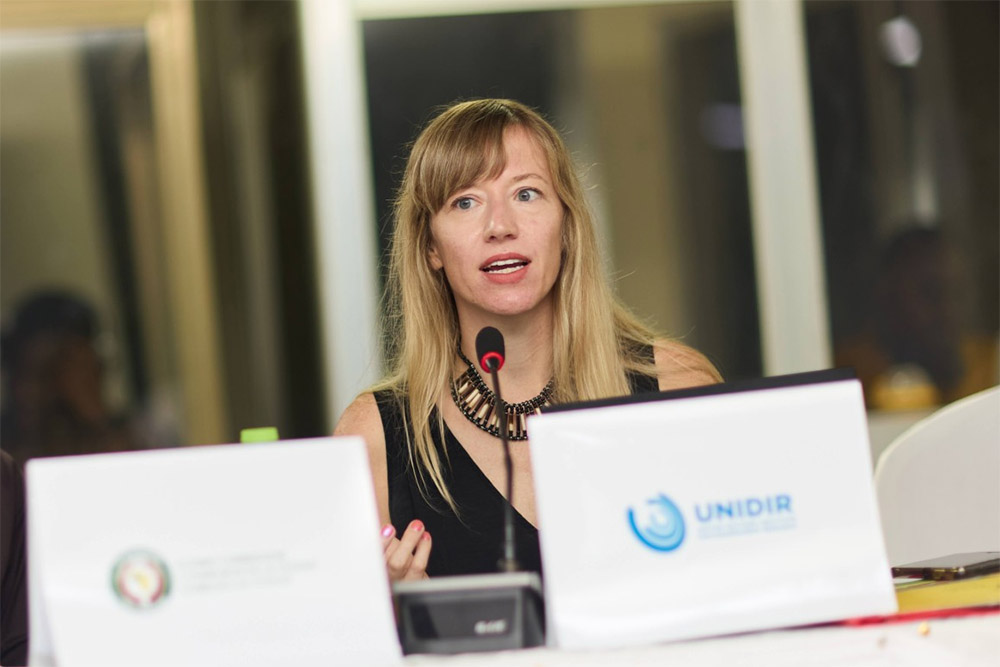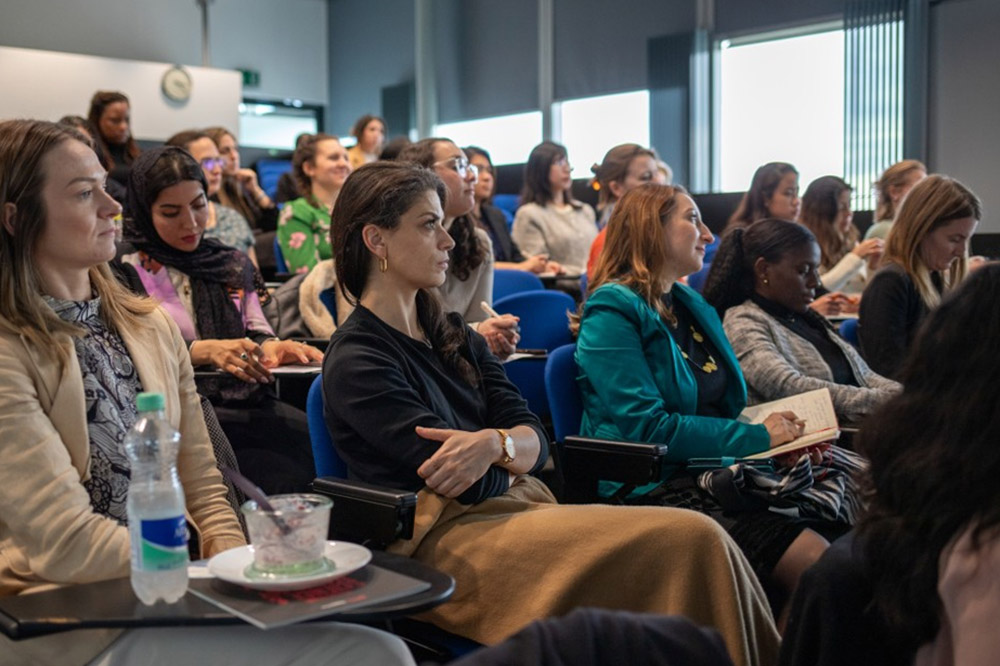As the International Day for Women in Diplomacy approaches, we sat down with Renata Hessmann Dalaqua, who heads UNIDIR’s Gender and Disarmament Programme. Since the programme was launched in 2018, Renata has witnessed significant shifts as regards to gender balance in arms control and disarmament. In this interview, she shares her insights on the progress made, the challenges that remain and the importance of integrating gender perspectives into all aspects of arms control and disarmament.
UNIDIR systematically tracks gender balance in arms control and disarmament and makes the data available through its Gender and Disarmament Online Hub. What changes have you seen since you started in 2018?
The participation of women diplomats in arms control and disarmament forums has slightly increased from 32% in 2018 to 34% in 2022. This is in contrast to other areas of diplomacy, where women and men are equally represented, such as human rights and humanitarian affairs. However, while numerical progress might be slow, awareness and visibility of gender issues have significantly grown. In 2018, discussing gender equality in disarmament was unusual; now, it’s much more common, and the disarmament community is addressing this issue in a more systematic way. This shift reflects a broader recognition of the importance of integrating gender perspectives into all aspects of arms control and disarmament.
Despite some improvements, the field of arms control and disarmament has a persistent gender imbalance. Can you tell us more about the Gender and Disarmament Programme at UNIDIR? What makes it unique?
The Gender and Disarmament Programme is a distinctive initiative that enables UNIDIR to support states and disarmament stakeholders in achieving gender equality and applying a gender lens across all areas of arms control and disarmament. Our work is structured around three interrelated pillars.
The first pillar involves applying gender analysis to international security to understand how gender norms shape the role of weapons in societies and the impacts of weapons and violence. Women and men experience conflict differently and are vulnerable to different kinds of threats. For example, men and boys are often the majority of those killed and injured in conflict, while women and girls are most vulnerable to sexual and gender-based violence. Additionally, women and girls usually bear the responsibility of caring for children during crises. It’s important to recognize that it’s not about creating hierarchies or comparing experiences as better or worse; it’s about acknowledging that these experiences are different. Crucially, women’s voices are often missing from decision-making processes.
That’s a vital point. What about the second pillar?
The second pillar focuses on building awareness and generating data on gender equality. We identify patterns, analyze trends, and offer ideas to enhance women’s participation in international security. This is achieved through research and capacity building, which includes initiatives to support women’s professional development. We also encourage everyone to engage with gender as an analytical tool, providing a better understanding of the different needs of various groups in society.

How does the third pillar build on these findings?
The third pillar uses research findings to inform gender-responsive measures in all areas of arms control and disarmament. For instance, we advocate for gender-disaggregated data collection to address the needs of survivors more effectively, as well as gender-sensitive risk education programs. By integrating these insights, we aim to create more inclusive and effective disarmament policies and practices.
You recently concluded the pilot edition of the UNIDIR Women in AI Fellowship. Can you tell us more about that?
The UNIDIR Women in AI Fellowship, inspired by the successful Women in Cyber Fellowship, provides women diplomats with knowledge and resources related to artificial intelligence (AI) and international peace and security. The response to the fellowship was extremely positive and encouraging! We received over 100 applications from 56 countries worldwide, leading us to increase our intake from the originally planned 20 to 31 Fellows.
In the last week of May, the Fellows gathered in Geneva for a one-week training programme. Sessions covered topics such as military applications of AI, implications for international humanitarian law, prospects for multilateral governance, and discussions on bias in AI and mitigation strategies. The Fellows also attended the ITU AI for Good Summit to observe AI technology in action. One notable outcome is the spirit of unity and support among the women diplomats. They are often the minority in their workplaces, so being part of a group of women is certainly a change. This camaraderie helps them share challenges and experiences, creating a supportive environment. This can foster long-term professional relationships, which are important in the field of diplomacy.
The feedback has been overwhelmingly positive, and we plan to expand the UNIDIR Women in AI Fellowship in 2025.
Finally, what motivates your work in gender and disarmament?
I believe that by injecting issues of justice and equality into arms control and disarmament we can come up with more innovative and sustainable solutions.
This vision drives UNIDIR’s gender and disarmament programme, pushing us to continue our work and expand our impact. We are committed to achieving gender equality and integrating gender perspectives into all areas of disarmament, ensuring that our efforts contribute to a more comprehensive and human-centered approach to international security.

